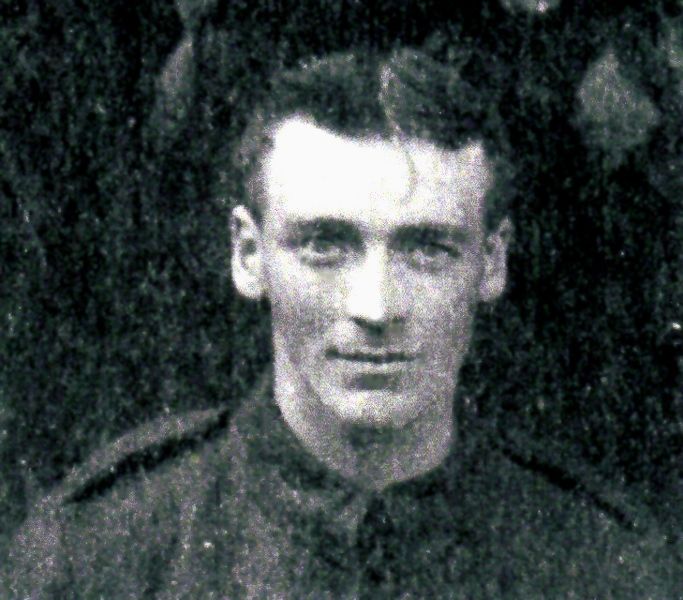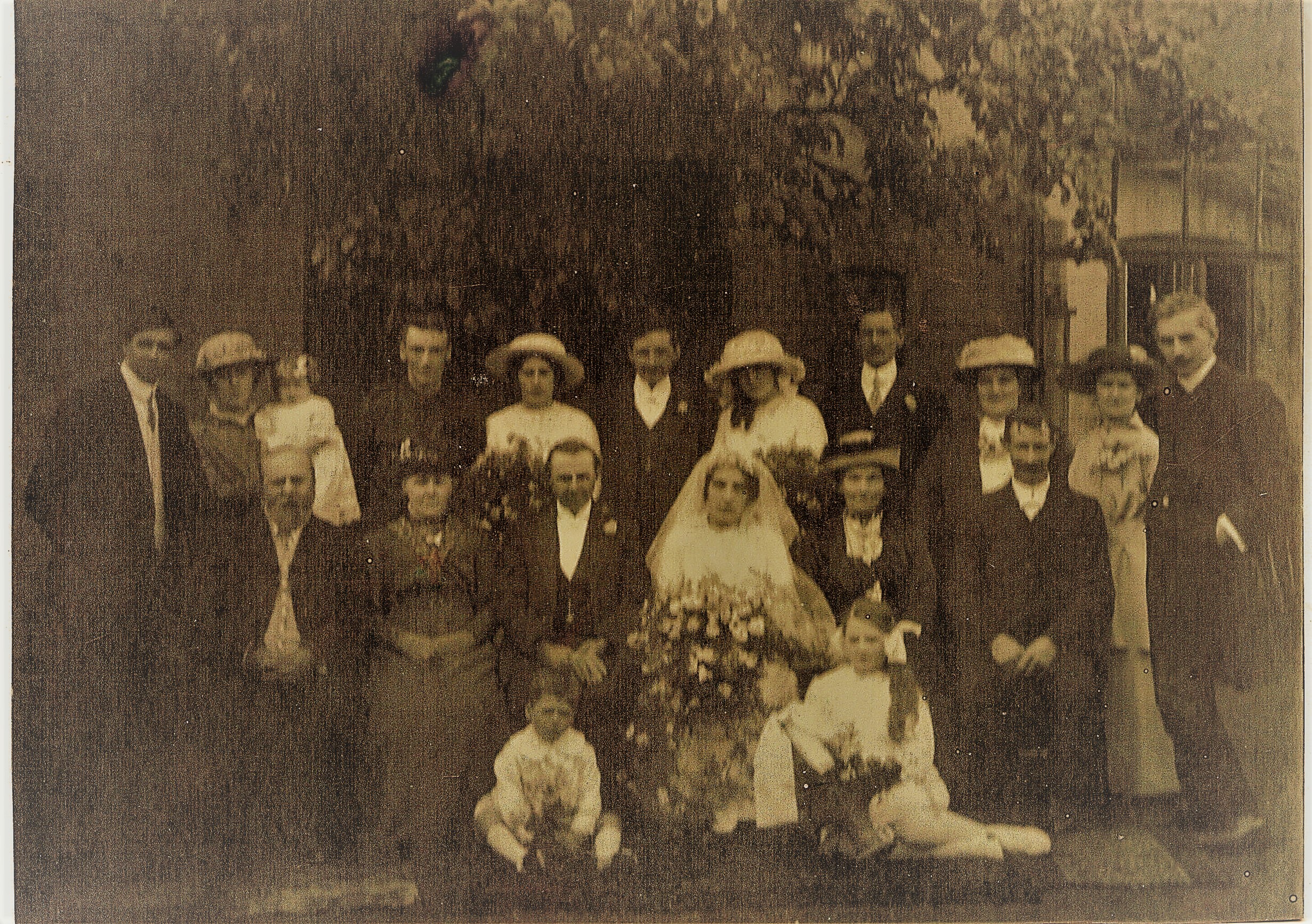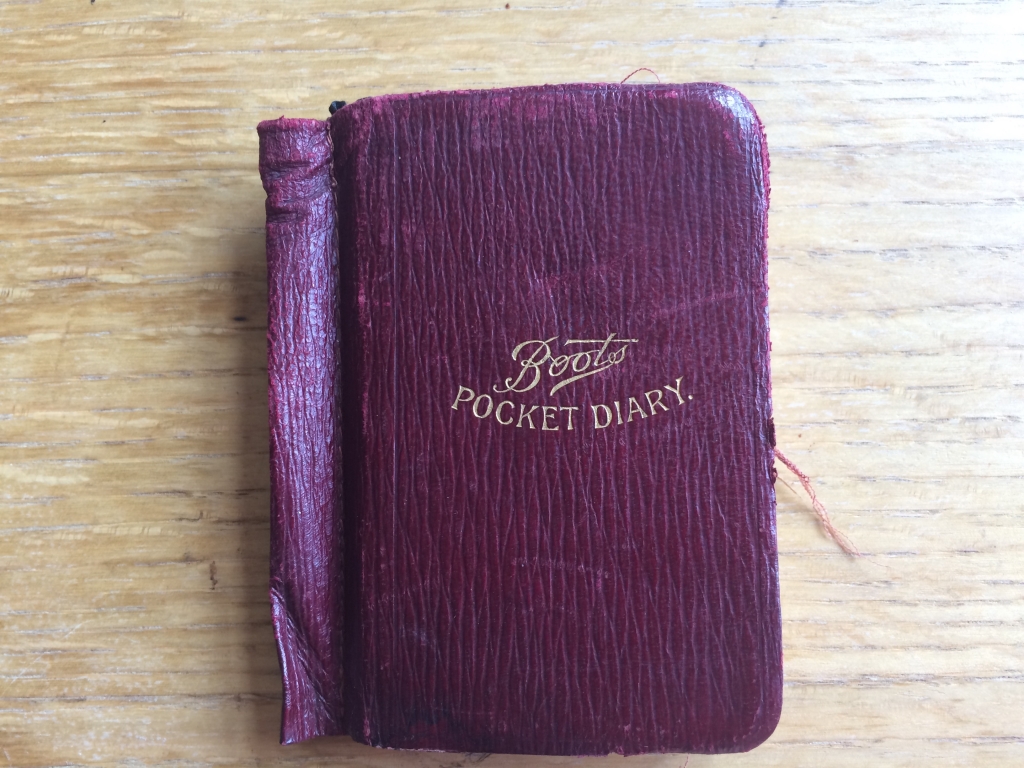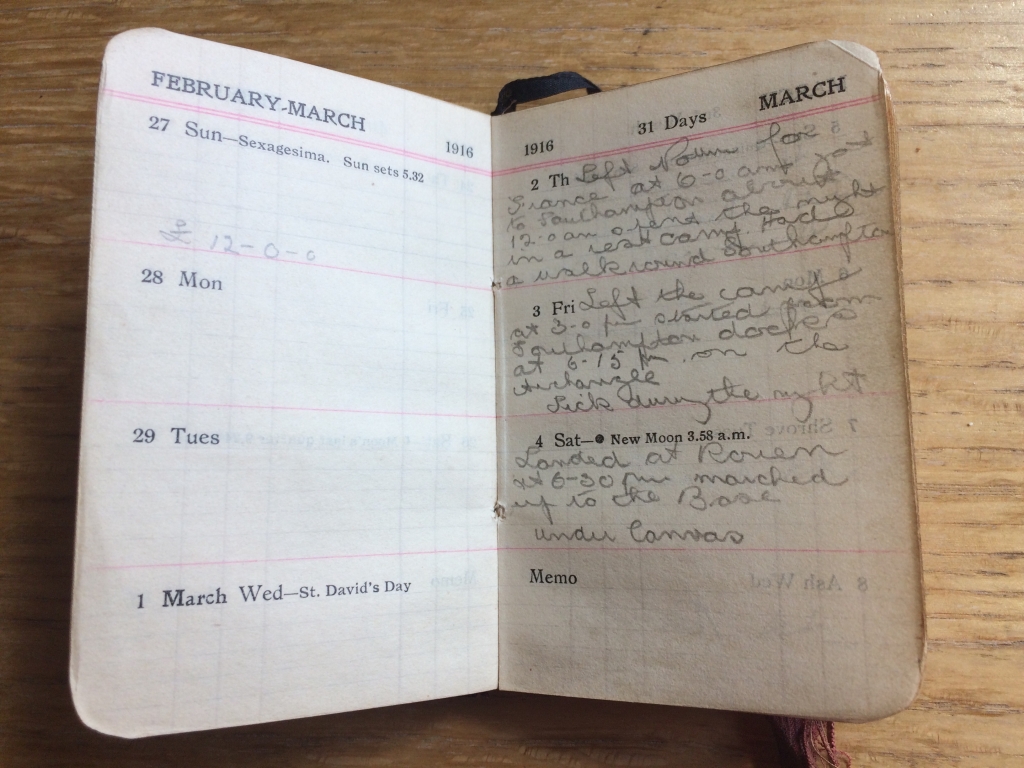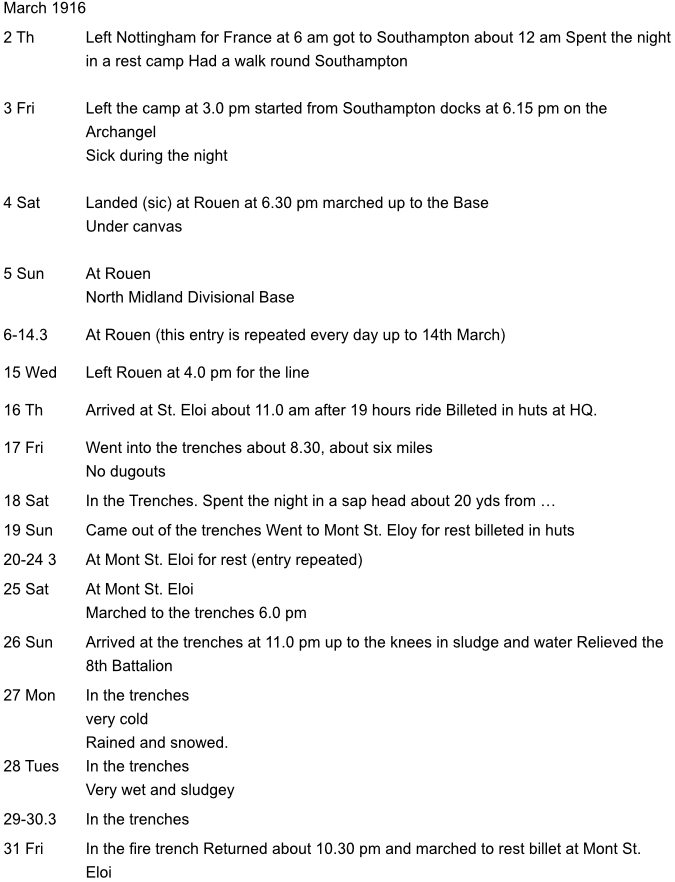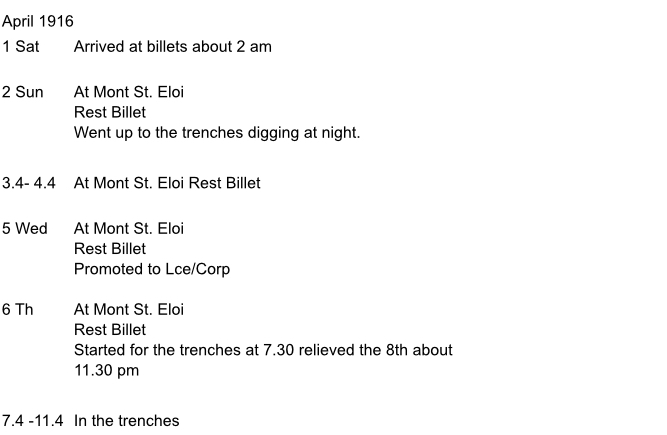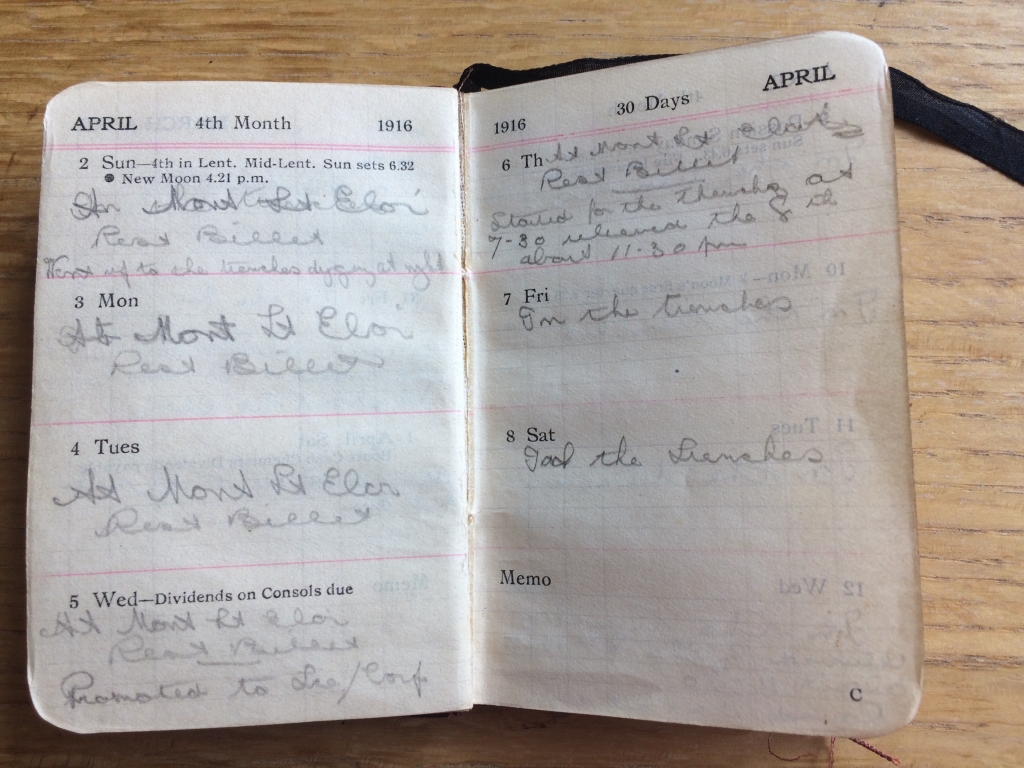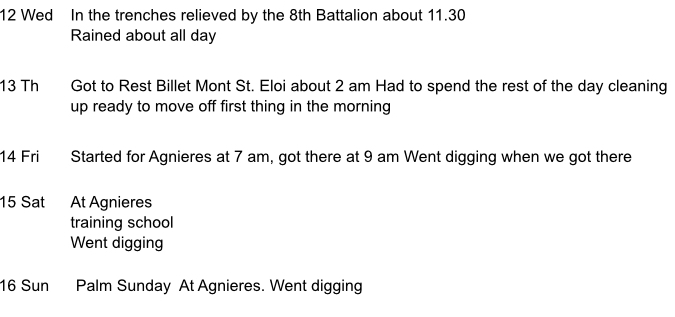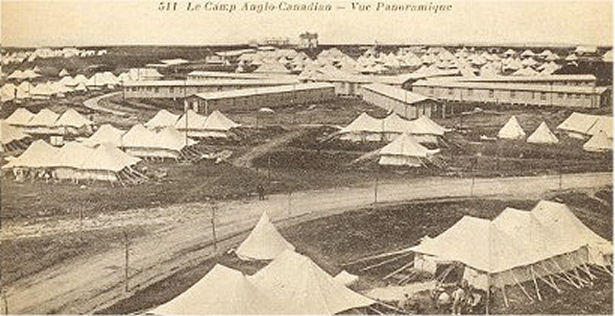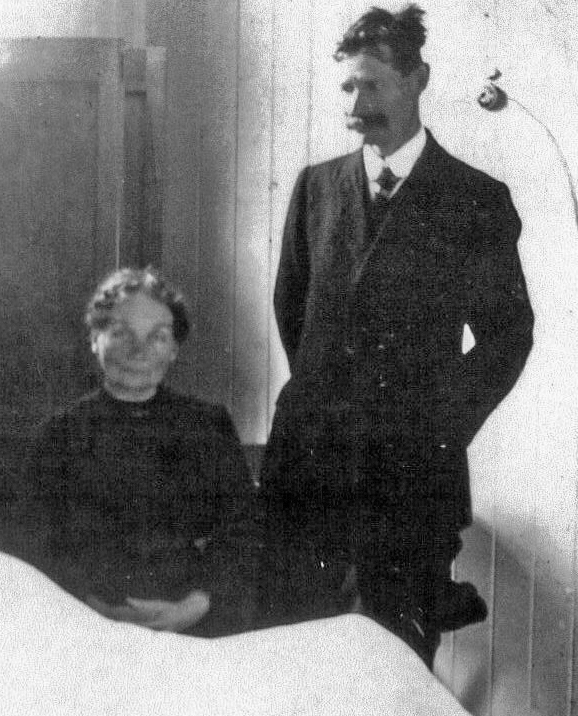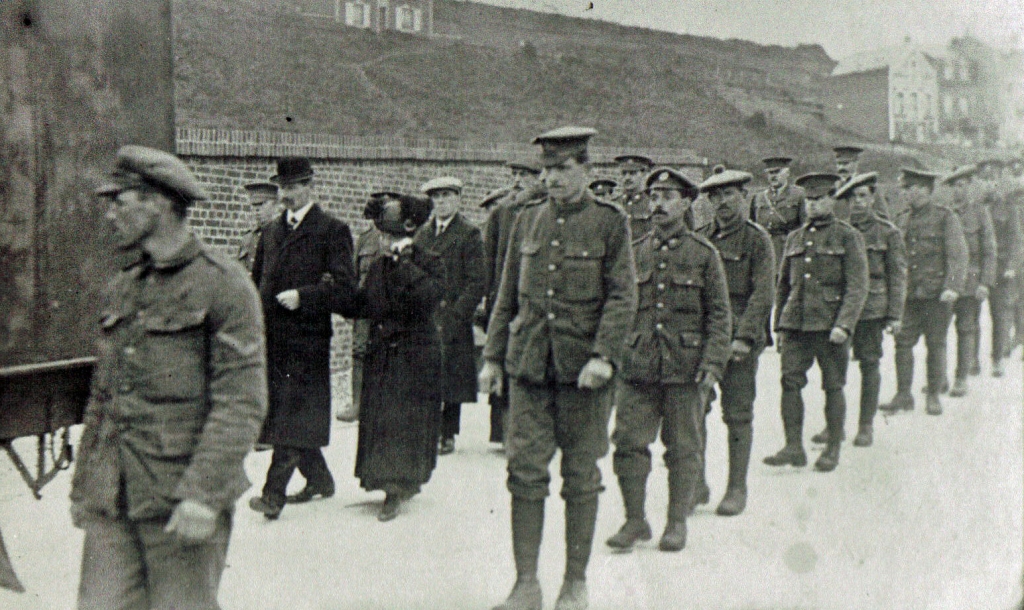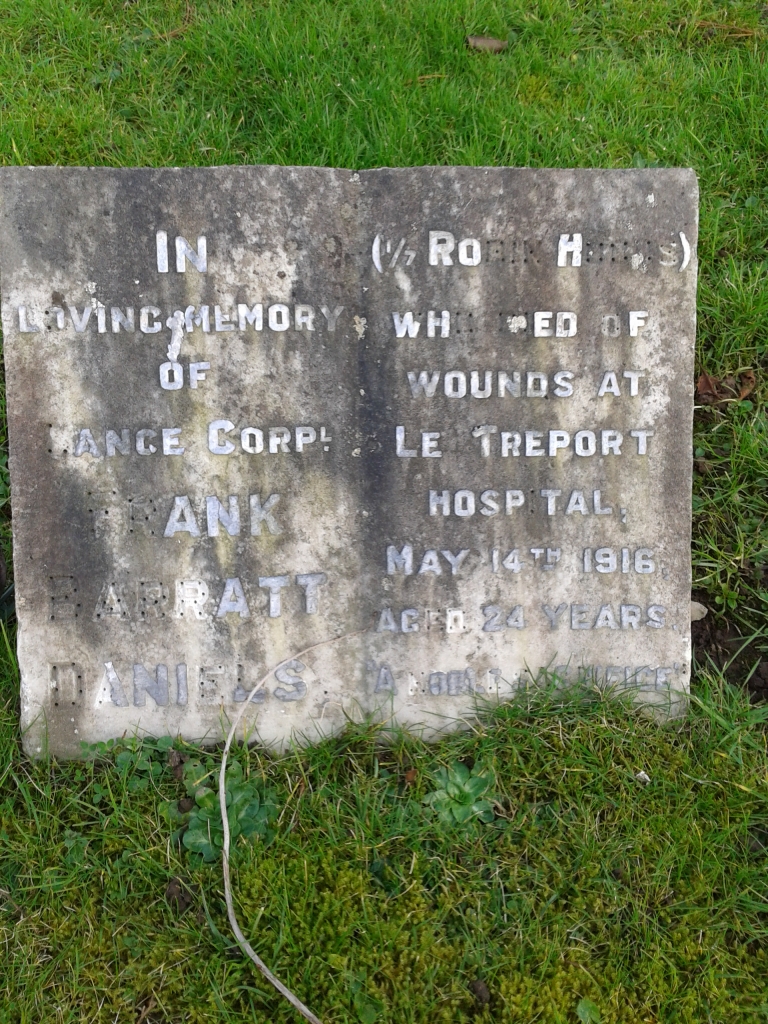The story of Frank Barratt Daniels:
How the YMCA assisted relatives of dangerously ill servicemen
Frank Barratt Daniels was one among hundreds and thousands of men killed in the First World War. Unlike most though, his mother was at his bedside in France when he died in 1916. This unlikely scenario took place through the services of the YMCA. His mother and stepfather had been given permission to travel by the War Office. Volunteers from the organisation met them off the ferry, assisted them through their vigil, the funeral and their stay abroad before they embarked on the journey home to Radcliffe on Trent. Without the intervention of the YMCA, Alice Daniels, Frank’s mother, would never have seen her son again.
Frank Barratt Daniels from the Sherwood Foresters museum at Nottingham Castle
Background and war service 1914-1915
Frank was born in Bedfordshire in 1892 but was brought up in Radcliffe on Trent where his mother’s family lived. His grandfather Richard Barratt was a shoemaker, baker and grocer with premises in the centre of the village. Frank had two older brothers, Richard Bennett and Frederick John, and three older sisters, Annie, Ellen and Alice. His father died in the 1890s and his mother married Charles William Johnson, who was ten years younger than her, in 1901. The family moved from Thraves Yard to their new home, ‘Ashfield’, at the Harlequin in Radcliffe. Ashfield was one of several nurseries in the area for market gardeners. The family were Wesleyans and members of their local church, which has since been demolished.
Frank attended school In Radcliffe and joined the 2nd Nottingham Company Boys’ Brigade (Dakeyne Street Lads Club) in Nottingham. In 1911 he was working at Wrights, a printing company in Radcliffe. His older brother Richard (always known as Bennett) Daniels had emigrated to America and his mother Alice was a patient in Nottingham General Hospital at the time of the census. Frank enlisted with the Territorial Force in 1912 and was attached to the 1st/7th Battalion of the Sherwood Foresters (Robin Hoods). He was now a printer’s apprentice at Howitt and Son, Alfred Street Mills, Nottingham.
When war was declared, Frank was mobilised immediately because he was a territorial. He would have paraded at the Sherwood Foresters headquarters on Derby Road on 5th August 1914 then marched with the Robin Hoods to Nottingham Market Square where they were met by cheering crowds. He was under the command of Lt. Colonel Charles Birkin from Lamcote House, Radcliffe on Trent. Frank left for France from Southampton on 28th March 1915 after several months of army training. He underwent hospital treatment for dental caries in Versailles, returning to the 46th Division base camp in Rouen towards the end of May. He re-joined the Robin Hoods at Locre and went with them to the front line at Kemmel on 27th May.
The 1/7th Sherwood Foresters were in trenches for four days from 28th May; their tour of duty included instruction by a Kings Royal Rifles company. They were relieved by the 5th Leicestershires and 8th Sherwoods on June 2nd and marched back to their rest billets at Locre. The pattern of four days in the trenches and four days rest continued for three weeks. On June 20th the unit attended a divine service in the field at Locre then paraded to receive Sir Charles Ferguson, acting Commanding Officer. He commended the battalion on their work and said that ‘their trench work was so good that he had sent some of the battalions of the New Army to the ‘Robin Hoods’ for instruction in trench warfare’. They then marched off to Vlamertinghe where their C.O. Colonel Birkin re-joined them, having returned from home leave. On 23rd June the battalion marched to the east of Ypres in support of the trench line and went into huts at Sanctuary Wood and Maple Copse (source; War Diary of 7th Battalion (Robin Hood) Sherwood Foresters for 1915).
Frank received a bullet wound to his upper arm on 27th June while in support at Sanctuary Wood, ending his first phase of active service. He was transferred to No 4 General Hospital at Versailles and from there back to England where he arrived on July 1st 1915. He was in hospital for two weeks from 3rd-16th July at Delaney House in Scotland. Frank spent the next eight months recovering in England and had permission to wear a wound stripe.
For more information, description of the Wound Stripe click here.
By 2nd August he was well enough to attend the wedding of his sister, Alice.
Wedding of Alice M. Daniels (known as Cissie) and William Askey, August 2nd 1915
Photograph courtesy of descendants of the Daniels family.
Frank, in his military uniform, is standing third from the back on the left in the wedding photograph. His sister Ellen (known as Nellie) is standing third from the right. The woman next to her may be his sister Annie, who emigrated to Canada, His mother is sitting between the bride and his step-father. It is not known if Frank’s brothers are in this photo; Frederick (always known as John) Daniels had also emigrated to Canada by this time where he worked for the Canadian Pacific.
Frank Barratt Daniels’ War Diary
Frank had been immersed in his military role since the outbreak of war. He now had to adjust to his status as a wounded soldier back in England. Several other men on the Radcliffe on Trent Roll of Honour were in a similar position including Sydney Newbury, also from the 1/7th Sherwood Foresters, who was wounded in November 1915 and took over a year to recover. The ‘recovering wounded serviceman’ experienced complex emotions including relief at being away from the front, a sense of loss and feelings of uselessness when thinking about comrades still in action, coming to terms with what he had undergone and anxiety about the return to active service. Perhaps some of these emotions led Frank to keep a ‘war diary’ as a reminder of where he had been and what had happened.
Frank’s Boots Pocket Diary for 1916 is neatly laid out. He wrote his name, service number (1598), battalion and regiment on the inside front page above the declaration from Boots that buyers of the diary were entitled to £1000 accident insurance valid for a year. He ignored the page where he could fill in his hat, collar and glove sizes, together with his bicycle and watch number. Moving past the pages showing the Jewish Calendar, population of the world’s largest towns (Nottingham 259,942), and motor vehicle registrations, there is one entry on the Memoranda page: the address of Miss Footitt, Sunningdale, Clare Valley, The Park, Nottingham. The relationship between Frank and Miss Footitt is not known but her unique place in the diary suggests her importance to him; other addresses are written at the back. Entries begin on 2nd March 1916 when Frank left once again for France from Southampton. The action Frank describes took place around Mont St Eloi where the British Army had recently taken over from the French. He was serving with No 5 section, 2 Platoon, “A” company, 1/7th Sherwood Foresters. In the middle of the month the unit had to contend with two mine explosions and it was shortly after that when Frank was wounded again, this time fatally. The diary entries are set out below as Frank wrote them, without punctuation.
There are no further entries. The regimental war diaries for the 1/7th battalion include information from the point where Frank stopped writing in his diary on April 16th to the point where he was fatally wounded on Easter Sunday, April 23rd. There was a mine explosion on April 17th and another on April 20th; it would have been difficult for Frank to write his diary at this time.
From the Regimental Diary of the 1/7th Sherwood Foresters:
17.4.16 A working party, C Coy (Company), under command of Lieut. Player went up to work on Left Sector of Brigade Front, held by the 1/8th Sherwood Foresters. During the night the enemy exploded a mine under our front line trenches in the vicinity of the Working Party who stopped work and seized and held the near top of the crater, while the Garrison of the trench dug on. Later a message was received by Col Brewitt from the O/C 1/8th Sherwood Foresters thanking him for the valuable assistance rendered by the Working Party of C Coy to the 8th B Sherwood Foresters at a difficult time.
19.4.16 The Battn moved from Huts Mount St Eloi to the trenches to find fatigue parties for the mines and sapheads on Brigade Front …
20.4.15 The enemy sprung a mine at 10.30 pm at the head of Central Boyar leaving a crater 100 yds long, ‘C’ Coy again in support to the line. Remainder of Bn as for 19th, doing mining fatigues
21.4-27.4.16 C Coy re-join B and go into dugouts on Route de Bethune. B employed as for 19th on mining fatigues. ‘A’ Coy to Cross Street.
Frank Barratt Daniels, who was in ‘A’ Company was wounded on the 23rd, probably by artillery fire in view of the severity of his injuries. He was taken to No.2 Canadian Hospital at Le Treport, out of the firing line and near the coast.
Frank Daniels’ final days at Le Treport
Le Treport hospital complex showing the Hotel Trianon on the horizon
Photo of postcard
Frank arrived at No 2 Canadian Hospital on 26th April. The large Le Treport complex contained several hospitals which included the Hotel Trianon on the cliff tops above the town, huts and tented areas with beds for almost 10,000 patients. Most of the original buildings were destroyed in WW11 and have been replaced by post-war housing. Frank had eight fractured spinal vertebrae and by 30th April had been diagnosed as dangerously ill. Most of the servicemen on the Radcliffe on Trent War Memorial who died of wounds lost their lives within one to three days after receiving their injuries. Frank’s suffering was less typical in that it was prolonged for over two weeks. Antibiotics were unavailable at that time and pain killers were limited to ether, morphine and caffeine.
How the YMCA assisted relatives of dangerously ill servicemen
In May 1915 the Army Council gave permission for relatives of dangerously wounded or ill officers to visit them in base hospitals in France. Permission was also granted for the relatives of other ranks in some cases. When a serviceman was known to be terminally ill, a message was sent through the war office to his mother or wife to tell them that a permit would be granted to visit the dying man. The army was responsible for travel arrangements from England. Relatives were met by volunteer members of the YMCA when they disembarked in France then motored to their destination. The YMCA had been in France since November 1914 where they organised hundreds of rest and refreshment centres for troops passing through the principal army bases and along the main lines of communication. In June 1915 the organisation opened a hostel for relatives near the coast, following the decision by the Army Council. It is very likely that the trip made by Frank’s mother and step-father was organised by the YMCA. It is also possible that they were advised about how to visit their son by Colonel Charles Birkin, Frank’s former Commanding Office. Colonel Birkin was wounded at the Battle of Hooge (July 1915) and was recovering in Radcliffe on Trent when Frank was in hospital at Le Treport. He had always shown great concern for the men under his command in the Robin Hoods and would certainly have known that Frank was dangerously ill.
Alice Barratt Johnson and her husband at her son’s bedside in France.
Photograph courtesy of descendants of the Daniels family.
The number of days spent in France by Frank’s family is unknown. Families visiting dying relatives were looked after by YMCA volunteers, many of whom were women. When the time came, the YMCA helped organise funerals and the family’s participation in it. Frank died at 1.20 am on 14th May and was buried at Le Treport military cemetery. He was given a full military funeral. The photograph below showing his mother and step-father following the coffin was probably taken by the YMCA, following their usual practice which included providing families with a picture of the grave.
Photo showing Alice and Charles Johnson following her son’s coffin at his military funeral, attended by servicemen and officers at the rear
Photograph courtesy of descendants of the Daniels family.
Frank’s effects were returned to his family, including the Boots Pocket Diary which he had carried to the trenches. The addresses he had carefully noted provide some clues about the people who mattered to him. He had added two fellow servicemen from the Robin Hoods to his list of friends and relatives: they were Private Roy Slater and Corporal Herbert Ward. The fact that Frank included their service numbers has made them easy to trace. Both lived in Nottingham. Roy was a single man of twenty and Herbert was married with a daughter, Maisie. He was twenty-four, the same age as Frank. Sadly, both were killed on 1st July 1916, the first day of the Battle of the Somme, during the attack at Gommecourt. Roy is buried at Foncquevillers military cemetery. Herbert’s body was not recovered and he is remembered on the Thiepval memorial.
The identity of Miss Footitt, given pride of place at the front of Frank’s diary, remains a mystery. She would have been a servant working for James Calvert Wilson who lived at Sunningdale, Clare Valley, The Park and was a land surveyor to the Duke of Newcastle. Miss Footitt may have been one of the daughters of Mrs Footitt from Great Gonerby, whose address is written in the back of the diary. She might also have been the sister of Mabel Footitt, a domestic servant in Radcliffe on Trent. All the Footitts were Wesleyan, as were the Daniels family and James Calvert Wilson; the Wesleyan community may have linked these people together. If Miss Footitt had known Frank well, she would have been deeply upset by the news of his death.
Frank Barratt Daniels is remembered on Radcliffe on Trent memorial and on the communion table in the Lady Chapel of St Mary’s Church. He is also remembered on the 2nd Nottingham Company Boys’ Brigade (Dakeyne Street Lads Club) memorial. The original memorial fell into disrepair but a new copy was installed in the Boys’ Brigade premises in 2014. In 1927 Lisle Rockley donated Rockley Memorial Park to Radcliffe on Trent ‘in honoured memory of the men of this village who fell in the Great War’ and his son, William Rockley who was killed in 1917. Finally, Frank’s family remembered him with a memorial tablet in Radcliffe on Trent cemetery. It reads:
In loving memory of Frank Barratt Daniels
(1/7 Robin Hoods)
who died of wounds at
Le Treport Hospital
May 14th 1916 Age 24 years
A Noble Sacrifice
Rosemary Collins
Radcliffe on Trent WWI Group would like to thank the descendants of Frank Barratt Daniels for all the information they have supplied, Frank’s diary and copies of the photographs.

